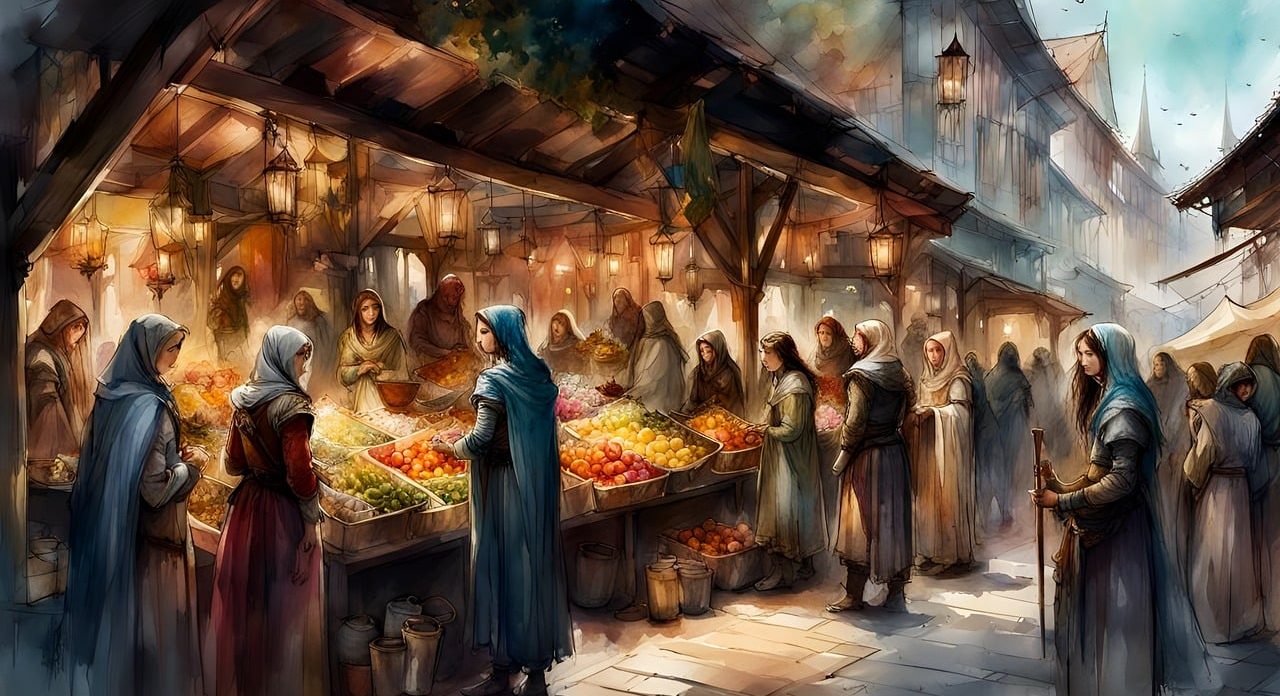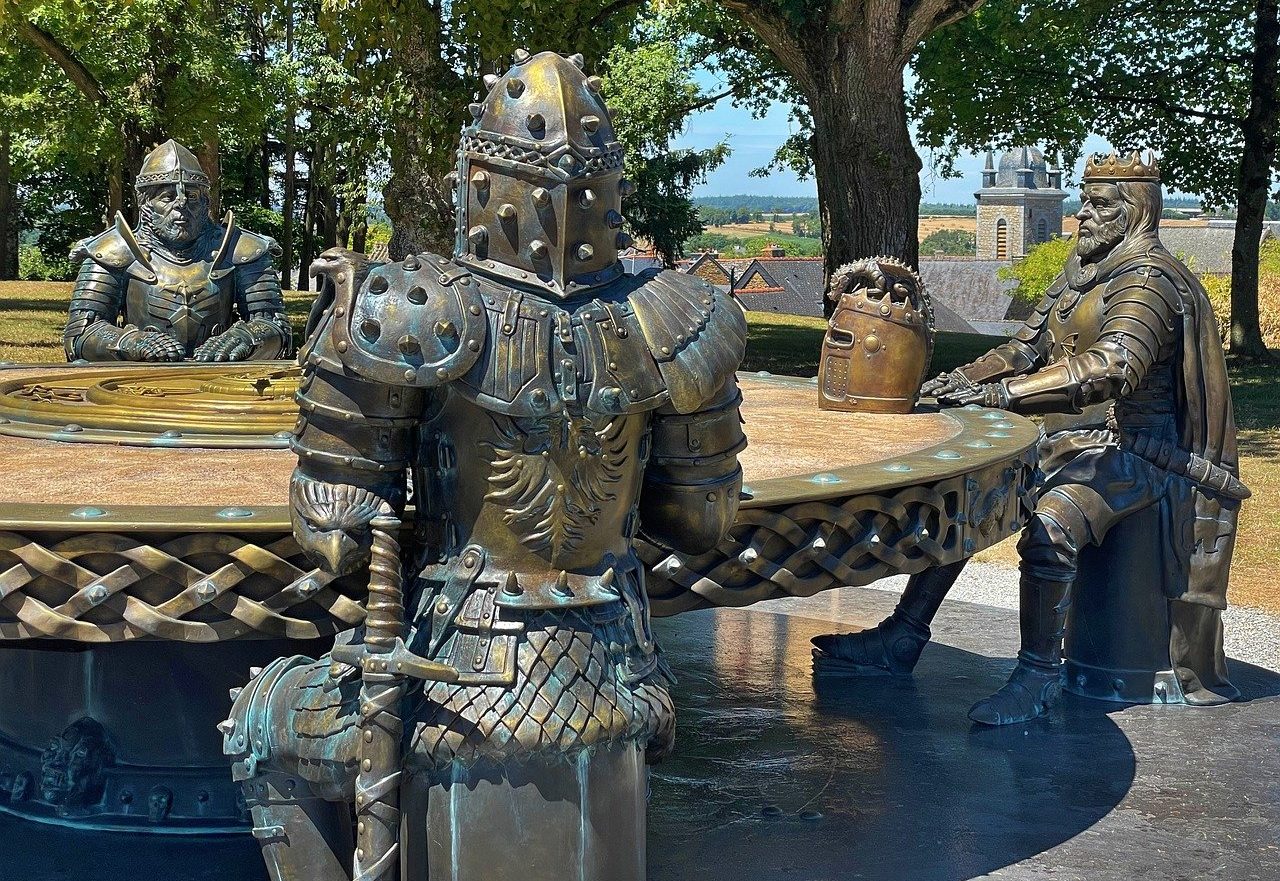
The markets of the Middle Ages allowed different needs to be satisfied.
The Middle Ages is a historical age that follows the Ancient Age and precedes the Modern Age . An age , meanwhile, is a periodization that allows history to be divided into different stages.
Also known as the Middle Ages , the Middle Ages begin with the fall of the Western Roman Empire (in the year 476 ) and extend, depending on the historian, until the discovery of America ( 1492 ) or the fall of the Byzantine Empire and the invention of the printing press. ( 1453 ).
There are those who call the period between the 3rd and 8th centuries Late Antiquity since they consider that it is a transitional stage between both ages.
Periods of the Middle Ages
The Middle Ages, on the other hand, can be divided into the High Middle Ages (the period covering the first centuries) and the Late Middle Ages (the last centuries of the Middle Ages).
The Early Middle Ages is the period that takes place between the 5th and 10th centuries . It is a stage above all of much cultural change and power struggle that gave rise to the German-Roman kingdoms, the Empire, taking center stage throughout the world. Byzantine and the Carolingian Empire.
All this without forgetting that in this period an important event occurred: the expansion of Islam , which meant that Spain was especially affected by this phenomenon. This is how Al-Andalus was born, which had corners and moments of great splendor such as that achieved by the Caliphate of Córdoba during which its surprising mosque was created.
The Late Middle Ages, for its part, is the period between the 11th and 15th centuries . During this time, events such as the expansion of the feudal system, the crusades, the birth of the bourgeoisie, the creation and expansion of universities, parliamentarism, monastic reforms of various kinds and a whole set of religious innovations in dogmatic and religious matters stood out. devotional.

The Arthurian legends developed in the Middle Ages.
Social changes and relevant characteristics
Among the changes that occurred during the Middle Ages, we can mention the emergence of the feudal mode of production (with feudalism and vassalage replacing slavery), the disappearance of the notion of Roman citizenship and the rise of theocentric cultures (such as Islam and Christianity) instead of classical culture.
Medieval cities, on the other hand, were characterized by the construction of large walls , castles, fortifications and defensive bridges, which is a reflection of the war conflicts of the time.
Estates of the Middle Ages
Society in the Middle Ages was divided into three classes: the clergy (monks, bishops, etc.), the nobility (knights, dukes, counts) and the common people or third estate (serfs). These classes did not contemplate social mobility (neither downward nor upward), unlike what happens with social classes that depend on changing economic conditions.
There was, in any case, the chance of ennoblement by merit, venality or marriage. That differentiated the classes from the castes .

The Inquisition was a religious court that punished heresy in the Middle Ages.
Culture and education
The culture of the Middle Ages is permeated by religious relevance. The Catholic Church was key in education and also in cultural dissemination, with monks translating and copying manuscripts in monasteries.
Universities emerged in this period, initially as guilds that brought together students and professors to defend their professions. Without printing presses, we moved from the parchments of antiquity to sheets of paper that were used in classes. Beyond the academic, among those books also stood out the compilation of cantos de geste , poems of epic poetry that singers, troubadours and minstrels spread from town to town. An example of this type of work is the Cantar de Mio Cid .
It is also important to highlight the rise of architecture . The great cathedrals of the Middle Ages were developed in Romanesque or Gothic style.
End of the Middle Ages
From the transition from feudalism to capitalism , the Middle Ages began a stage of decadence that led to the beginning of the Modern Age, which extended until the French Revolution and then gave rise to the Contemporary Age .
We can establish that the decline of the Middle Ages occurred between the 14th and 15th centuries . The appearance of capitalism, as we have mentioned, was one of the main causes that ended this historical period but it was not the only one. Other reasons were the different controversies that arose in the religious sphere, the appearance of professional armies and various major wars.
One of the consequences of the debacle of the Middle Ages was the emergence of large urban centers . These cities emerged from the growth of commercial activity to the detriment of the agrarian economy. The new demographic organization was consolidated with the advance of capitalism, with which people began to sell their labor power in exchange for a salary, ceasing to be serfs.
